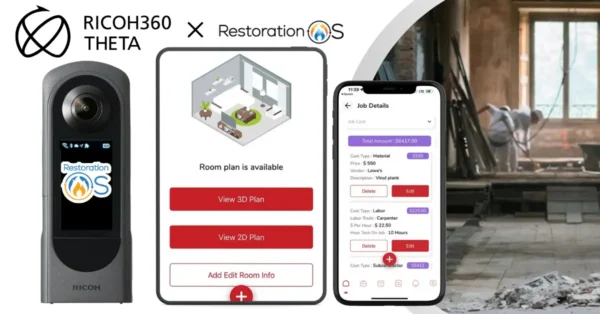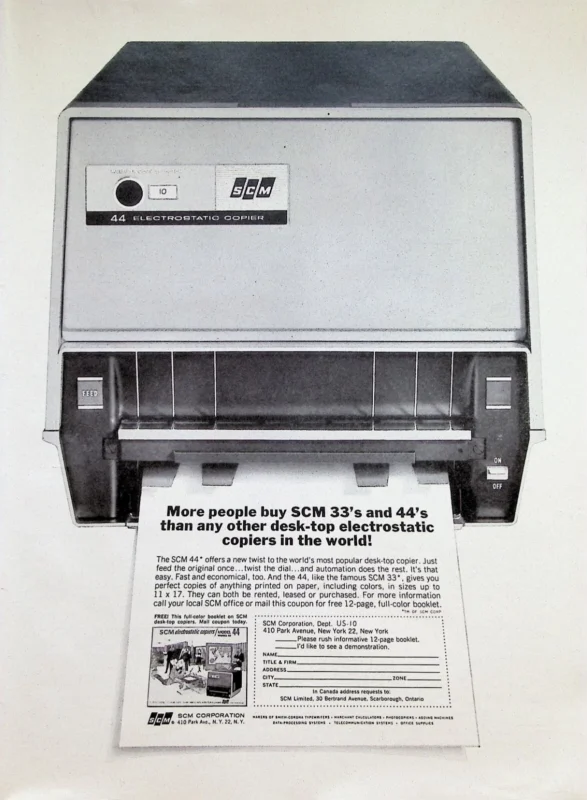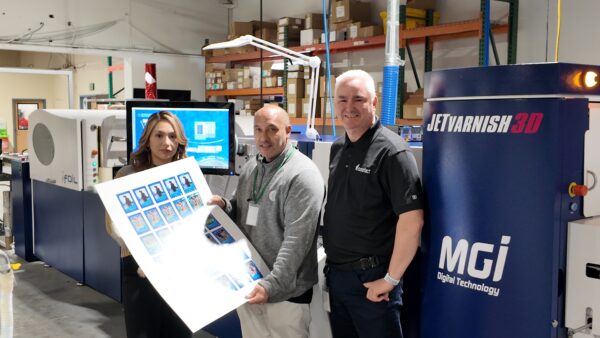Even for dealers with no experience clicking out higher volumes, light production is a lucrative lure.
Top: Baltoro HF Inkjet Press
Many dealers remain curious about casting lines into the production printing revenue stream and wading deeper into higher-volume output waters. The first step is defining the types of jobs that qualify as “light production print.”
In the world of Andre D’Urbano, director of dealer sales and corporate marketing for RISO, Inc., light production volumes “range from 30,000 to 200,000 prints per month on jobs that are static in nature.” (Variable data work would take the service requirements to another level, D’Urbano cautioned.) The key, according to the seasoned executive, is that jobs allotted to this type of unit are such that a service department””new to the production arena””could transition with minimal disruption.
“Canon, Konica Minolta, Xerox, and Ricoh all have a wide array of production devices,” said D’Urbano. “Some are simply too large for a new dealer to handle. By and large, I’m talking about the size of the device, as well as the segment the unit fits into. Typically, production equipment ranging in price from $50,000 to $150,000 is a safe space for a dealer [to start].”
Speeds would cover from 80 pages per minute (ppm) to 120 ppm, he added.
Executives from Konica Minolta Business Solutions U.S.A., Inc. suggested a huge range from the AccurioPress C3070, 70-ppm model all the way to the KM-1.
“It’s not a linear product line; it’s driven by the particular market and applications, parts, and products that fit into the growing space of that matrix,” said Laura Blackmer, senior vice president, channel sales, at Konica Minolta.
Kevin Kern, Konica Minolta’s senior vice president of business intelligence services and product planning, added that finding opportunities is not problematic for dealers. Production printing does, however, pose a different business model for their customers.
“What’s challenging is the hiring, training, and compensation,” Kern asserted. “These [production] sales reps are the antithesis of typical sales reps in our industry, making a 70% base and 30% commission, as opposed to the normal 30% base with 70% commission.”
With the 30-month-old Versant 3100 series leading the way in entry-level production printing, Xerox is renewing its participation in the production print playground for dealers. Co-developed with Fuji, the Versant 3100 is a dry-toner device that prints up to 100 pages per minute. Xerox demonstrated its commitment to the channel in May by naming Mike Pietrunti, senior vice president, U.S. multi-brand dealer channel.
“There are ample opportunities for revenue growth and click growth,” stressed Pietrunti, a copy industry veteran who joined Xerox eight years ago.
Inkjet, Too
Meanwhile, RISO’s D’Urbano emphasized that “production inkjet is a niche that can easily push into the $1-million range and often comes with more complex variable-data workflows.”
RISO addresses entry-level inkjet production needs where the investment in hardware fits most budgets “and where the output offers the required cold, flat, and dry finish expected of inkjet-printed copies,” D’Urbano explained. “Inkjet also is non-heat, making it an ideal solution for NCR and envelopes.”
Xerox aims to make inkjet mainstream with its new Baltoro HF cut-sheet press, which rolled out in late June and is built on an iGen frame. Its heads expel high-fusion inks.
“Inkjet offers “˜offset economics’ at a fraction of the cost of xerographic [toner],” emphasized Sean Hickey, president, U.S. production for Xerox.
The Baltoro can duplex up to 271 A4 ppm (197 ppm in simplex mode). Its recommended monthly duty cycle is higher, of course, starting at 750,000 copies and topping out at 3 million.
The Iridesse’s liquid-like, micron-type toner (developed by Fuji) yields high image quality of up to 2400 dots per inch (dpi). Presently, four dealers have brought Iridesse units to their customers. Xerox’s goal is to have 30 partners on board by the end of 2020.
“End-users love the metallic look of silver and gold,” Hickey said.
Getting Started
“Rookies should start out with light production so they can begin to wrap their arms around the way prospects and clients can turn their CRDs [central reprographics departments] into profit centers instead of cost centers,” recommended Brian Gertler, senior vice president at LDI Color Toolbox, based in Jericho, New York.
With more than 240 employees, LDI is one of the largest independent providers of copy/scan/send/print technologies, offering national coverage from branch operations across New York, Long Island, New Jersey, Connecticut,”¯and Southern California. The firm’s digital-office partners include Canon, HP, Samsung, Sharp, and Toshiba.
According to Brian Balow, vice president, dealer division, Integrated Production Solutions, Ricoh USA, Inc., “When talking with Ricoh Family Group [RFG] dealer partners, or any dealer for that matter, we talk about skillset. While products are important, having the skillset to support both pre- and post-sales is imperative. Once you’re ready, it’s helpful to get started with those products that sit within the light and mid-production categories. In addition, we recommend having a strong foundation of professional services for basic implementation, including both hardware and workflow.”
Some examples of Ricoh’s offerings include the”¯RICOH Pro C7200S/C7210S/C7200SL Series and the RICOH Pro C5200s/C5210s Series.
Initial Opportunities
One of the challenges of moving into production print is pinpointing the initial opportunities.
“Looking at your current customers is a great place to start and help to build your credibility and reference base within production print,” said Ricoh’s Balow. “It’s also an opportunity for expansion within your base. If you already have the fleet, adding production is a next logical step. For net new growth, it comes down to understanding certain applications and the verticals within your marketplace.”
LDI’s Gertler points to four key vertical markets.
“Education, legal, health care, and commercial printers provide great opportunities for entry-level and advanced production print,” stated Gertler.
For RISO’s D’Urbano, “the ideal client is the small to mid-size commercial print shop along with the small, institutional in-plant print shop [at school districts, colleges and universities, municipalities, and hospitals]. These, along with large offices that use the “˜large copier’ in the mail or print room in the back of the office.”
Konica Minolta’s Kern sees opportunities in in-plants where user managers and promotional materials are created internally.
Meanwhile, Xerox’s Hickey encouraged dealers to explore production opportunities within their existing customer base. Insurance firms and other financial services providers can be ripe targets, along with clients in the retail markets.
“It’s all about providing a better value proposition,” Hickey said.
Training Day
Selling any new product or solution requires training, and this is a priority for any dealer moving into production print.
“Dealers need to be trained to understand the markets that are most likely to use and cost-justify having on-site production,” advised LDI’s Gertler. “Dealers also need to have a realistic expectation and education about service pricing and servicing costs.”
The Xerox training platform for dealers is nimble and cat-like.
“We deploy production “˜tigers’ into the marketplace,” explained Pietrunti. “It’s part of the investment.”
These “tigers,” the subject-matter experts, consult on all matters of production printing. They work the entire sales cycle, helping to identify opportunities in the pre-sale phase. They also offer technical and strategic support post-sale, after the equipment is placed. Operator training typically takes three to five days. After three units are placed, dealers qualify for break/fix technical support from Xerox Direct.
Pre-sale support is equally critical, offered Pietrunti’s colleague Hickey.
“We target page volumes, monthly and quarterly,” said Hickey. “If a dealer’s customer is a university, for example, it may be outsourcing a certain number of pages to an offset press/print provider somewhere. ROI [return-on-investment] analysis is necessary to determine whether bringing that printing in-house is feasible. Digital presses need to be placed in the right environments for the right applications.”
Launching into production requires training at the sales and service levels.
“Dealers will be selling to those who make a living on the units they buy,” observed D’Urbano. “Downtime means much more than lost revenue. In some cases, it can mean the inability to meet bank loan deadlines. These units cannot go down and, yet, toner technology is prone to just that.”
He recommended redundancy (a dealer having more than one trained technician), as well as having the required parts on hand along with supplies. Dealers have to manage that inventory and the unanticipated production print-related service calls that come in during the day. The dealer will have to create a proactive PM (preventative maintenance) schedule that will minimize unwanted breakdowns and keep uptime above the 98% level, according to RISO profitability metrics.
“The only thing more important than having the right skillset is keeping that skillset up to date,” stated Ricoh’s Balow in reference to training. Sales training, technical break/fix training (a technician’s responsibility for meeting SLA (service-level agreement) requirements), and professional services and certification training are all important. This includes color-management certification, digital front-end workflow training, and certification (e.g. EFI Fiery).
“A service-level agreement is so important as response time requirements can vary so much,” added Konica Minolta’s Blackmer. “Service contracts for commercial are different than regular office, because you are selling them manufacturing equipment. A true commercial printing environment basically needs a 24/7 service contract. From the time they need help, it’s at the lowest a four-hour window.”
Konica Minolta understands different dealers have different training requirements. Often, it’s based on resources, customers, and how the dealer wants to grow. Blackmer told us Konica Minolta offers everything from in-person, classroom training to online resources, third-party resources, and customized training for every dealer.
Sales training is important, too.
“Most salespeople will have to be trained to walk into production accounts with at least a minimal level of applications training,” said RISO’s D’Urbano. “They should have the skill to effectively position their dealership and solutions they offer, as well as present a value proposition that will engage the end-user. The first meeting should lay the groundwork for a subsequent meeting where a production specialist can take a more granular approach to the call.”
Specialists Needed
Do dealers need to hire a production print specialist?
They do “only if they want to do it correctly!” quipped LDI’s Gertler. He is quite serious, however.
While Gertler’s exclamation is self-explanatory, Ricoh’s Balow elaborated: “Across the industry, the dealers who are most successful have a production sales structure and a compensation plan that does not compete with the general line of business. They also have a specialized team of people who understand applications, verticals, and trends, to name a few, that can support the sale.”
Hiring a specialist “would certainly be advisable,” concurred RISO’s D’Urbano. “One who can look at monthly print volume not as one monolithic cluster of copies but rather as several diverse jobs each with its own culture, needs, and requirements. One million copies may entail 10 different jobs.”
D’Urbano said a production print specialist can capably speak to each job and explain which technology best suits the application, for example: Is it best for toner, inkjet or offset? What is the workflow requirement? What paper is used?
“The discussions go well beyond cost per copy and hardware cost,” D’Urbano continued. “One individual to start is more than enough and can serve as a support mechanism for all other reps who are unfamiliar with production print.”
“The people you have to find are expensive,” added Kern, “It’s a little easier to find them right now””some good people are available due to restructuring at some manufacturers.”
Xerox executives say hiring a production print specialist decision is up to each dealer.
“It’s all part of the evaluation process. Dealers have their own business plans and organizational structure,” acknowledged Xerox’s Pietrunti. “Some dealers are able to seed employees and tap someone from their existing sales force.”
While the ins and outs of production print can be learned over time, Pietrunti noted, Xerox is seeing more dealers looking to hire specialists because it’s a different environment and requires a different skill set.
OEM Assistance
Dealers should never be hesitant about calling on their OEM to help them get started.
“Manufacturer-hosted or supported open houses and educational events enable end-users to understand and experience the benefits most commonly associated with production print,” suggested LDI’s Gertler. “They also get the opportunity to “˜kick the tires’ on a broad spectrum of devices, see all of the specialty media that can be used, and understand the wide variety of finished products that can eliminate the need for outsourcing.”
Konica Minolta’s Customer Engagement Center (CEC) in Ramsey, New Jersey, is one such site. For customers to see the equipment in action, Konica Minolta flies them to the center, where the company engages in initial discussions about the market, products, and the resources needed. Konica Minolta has made huge investments on supporting its partners. This encompasses providing product and solutions specialists who can assist with site inspection, lean manufacturing assessments, and workflow design.
For RISO, it starts with field support, including a district manager or product specialist who can help guide the dealer to the right market in the field and in a sales capacity. The company can also provide a production print specialist (PPS) with expertise in printing, workflow, and production applications, who can meet with the end-user, and carry out a detailed assessment of a client’s needs and organizational workflow. In addition, RISO offers dealers a workflow team that can help generate color matches on behalf of the client and dealer. The workflow team also provides on-site assistance during installation, as well as post-sale support, should any issues arise. Finally, RISO provides technical guidance for the dealer service team on setting up periodic maintenance (PM) schedules, determining which parts to have on hand at all times, and helping establish a timely ordering process for supplies.
At Ricoh, the company looks to help RFG dealer partners adopt a total integrated solutions model, which includes hardware, software, and solutions.
“We do this by assisting dealers in a number of ways, including starting with a business plan with financial projections, a sales structure, and training, and even marketing services that help to develop awareness and demand generation,” said Ricoh’s Balow. “It’s a market in certain segments that’s still growing with huge potential since the applications lend itself to more digital technologies.”
Production Requires Commitment
“Some of the best production print dealers are not the biggest,” observed Konica Minolta’s Kern. “There are some small dealers that compete quite well against those much larger in their territory. It’s a joint commitment on execution. We are committed to helping dealers succeed. The worst scenario is investing and not executing”” it’s a waste of money.”
“Everyone would like to get into production print, but not all are willing to make the
necessary investment,” concluded Konica Minolta’s Blackmer. “It needs to be a dedicated effort, investing in production specialists, SMEs [subject matter experts], workflow experts, equipment, running samples. If you do it as an offshoot, it will fail.”
Access Related Content
Visit the www.thecannatareport.com. To become a subscriber, visit www.thecannatareport.com/register or contact cjcannata@cannatareport.com directly. Bulk subscription rates are also available.




